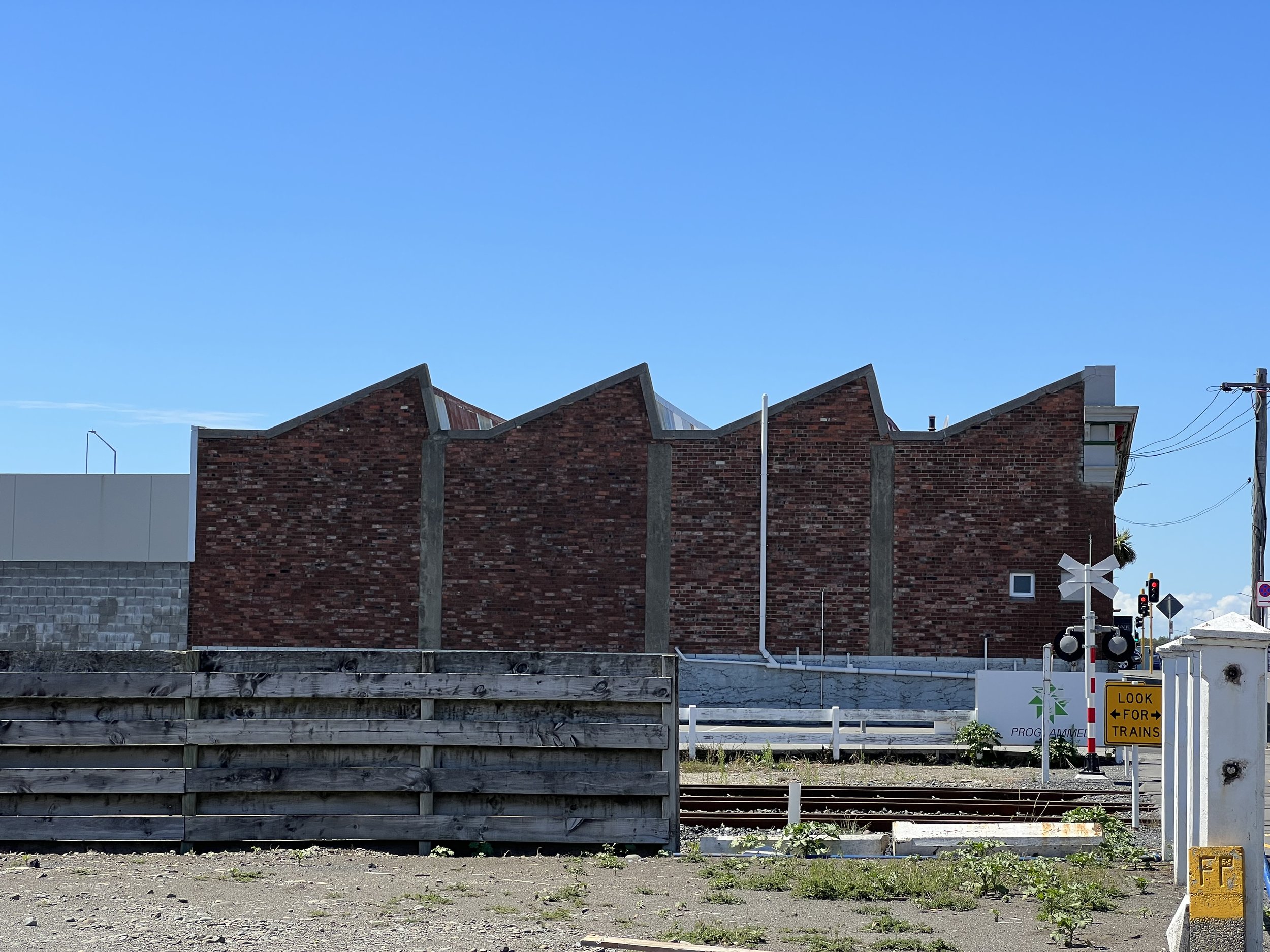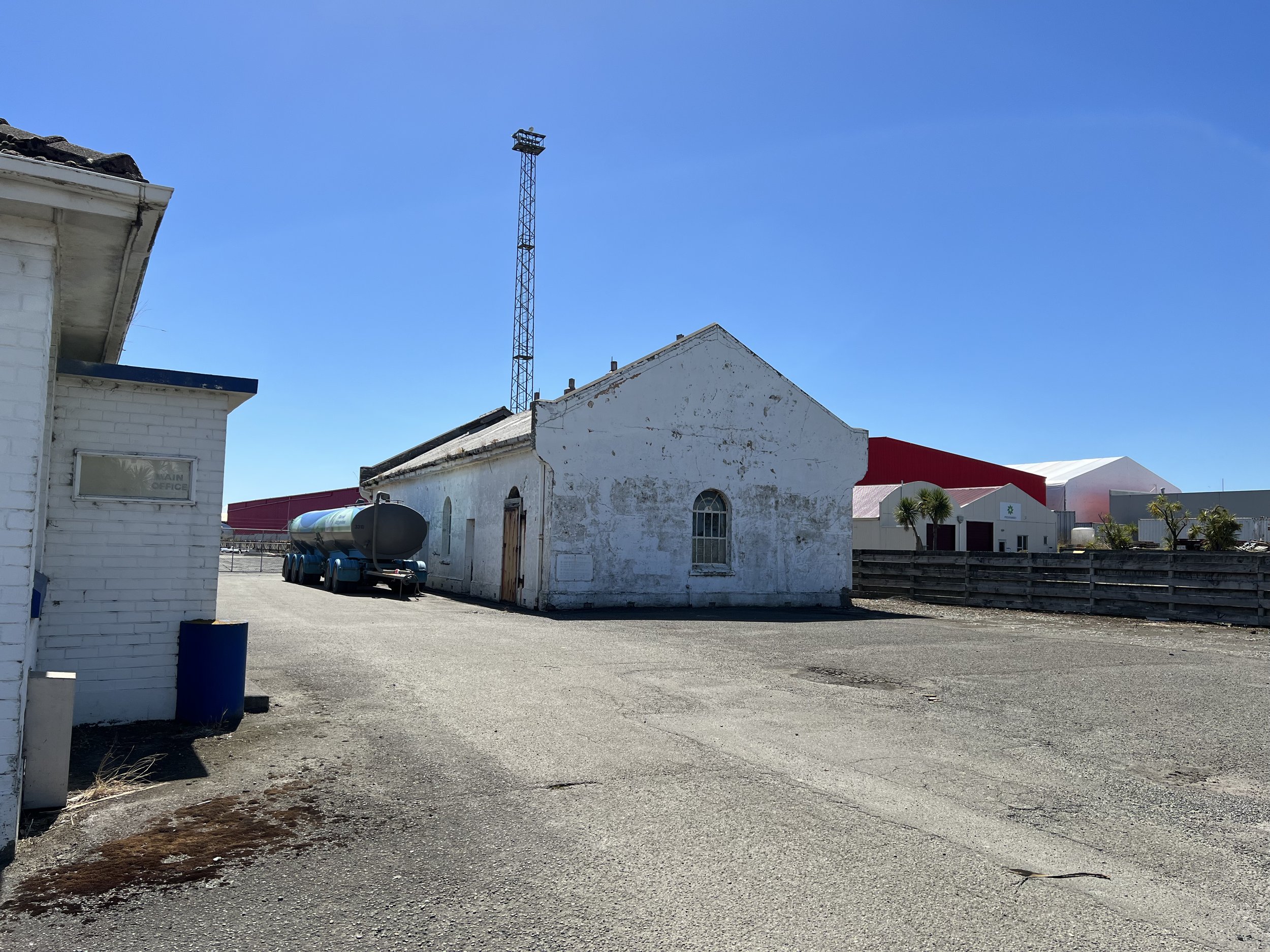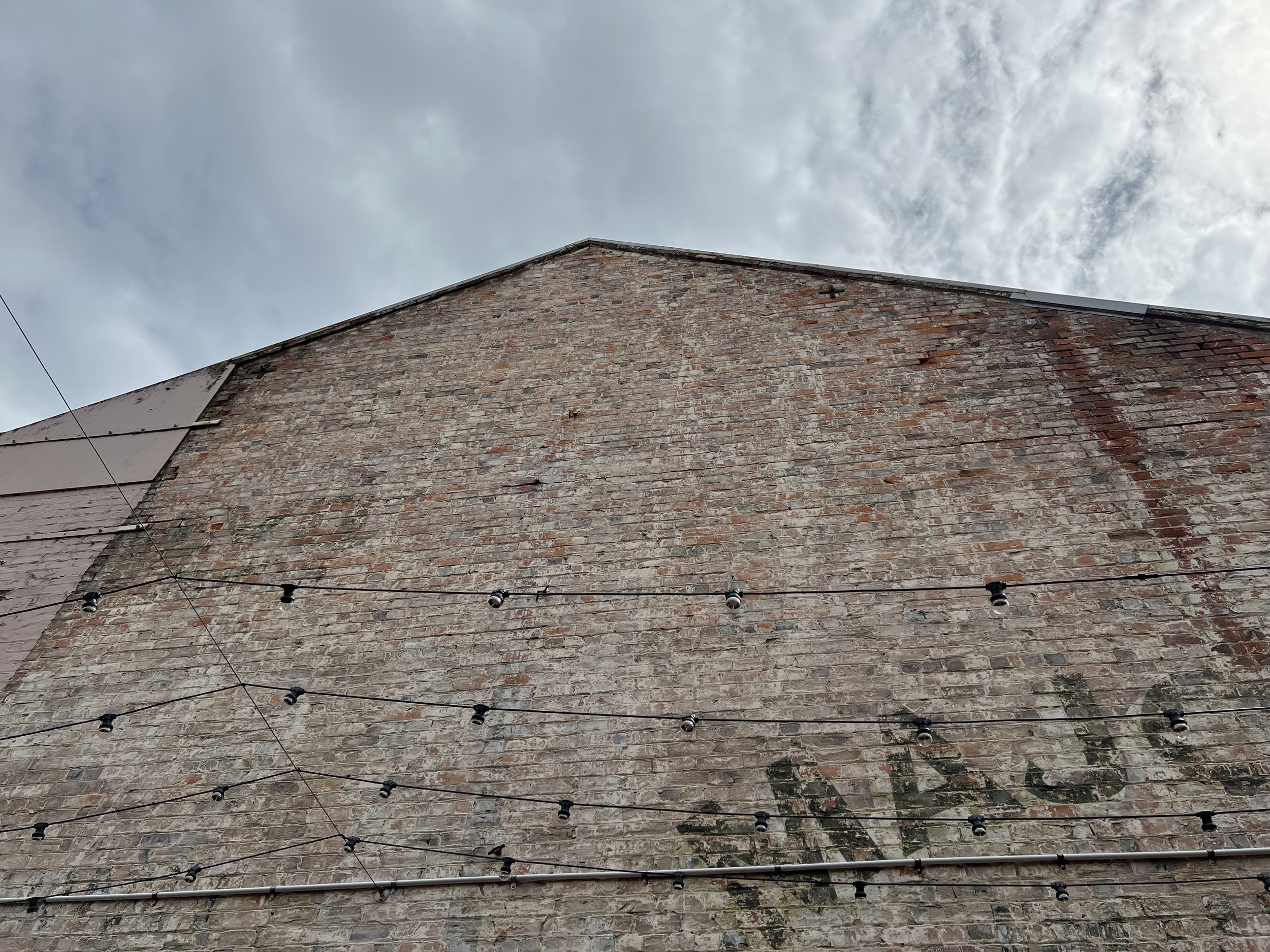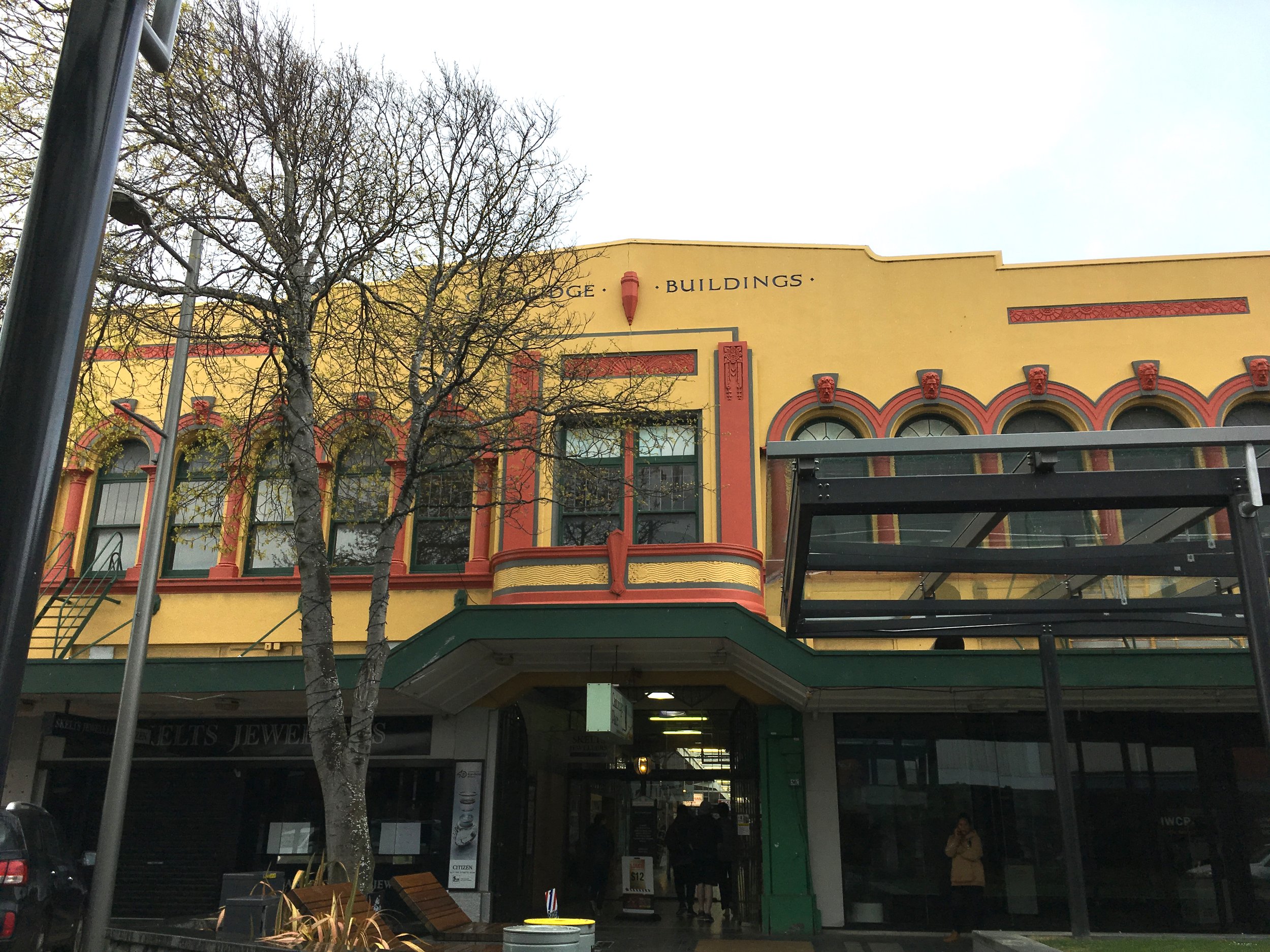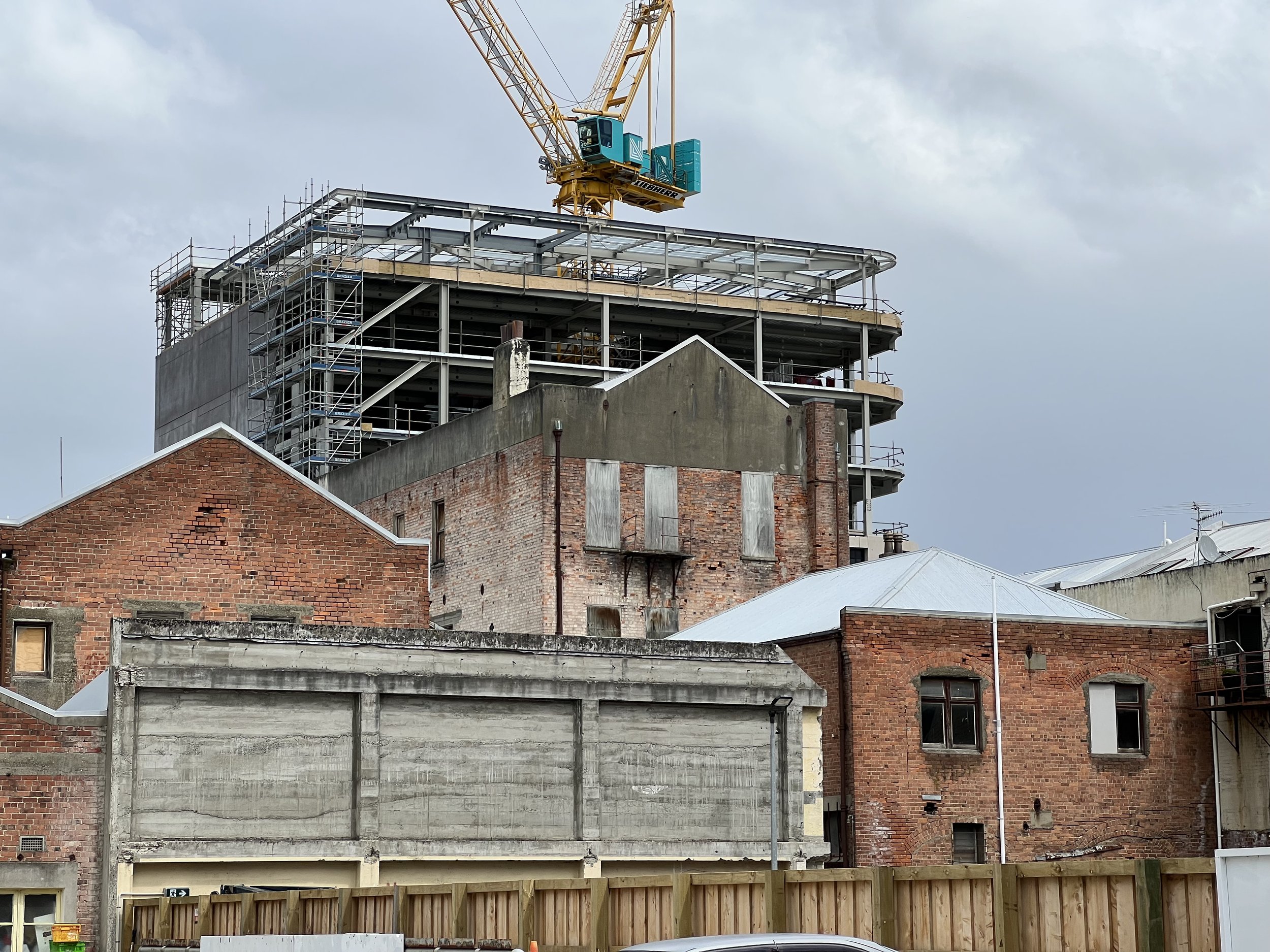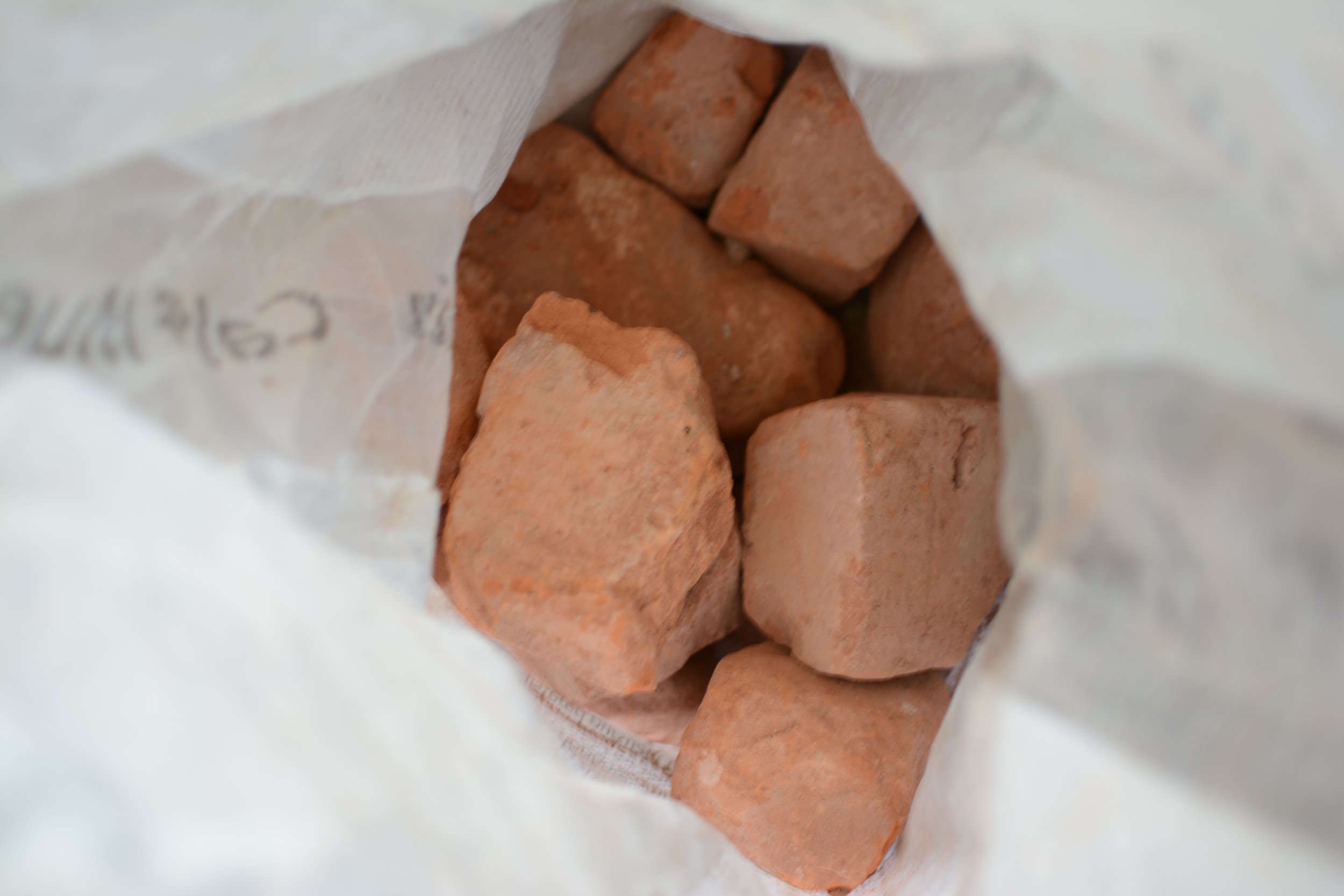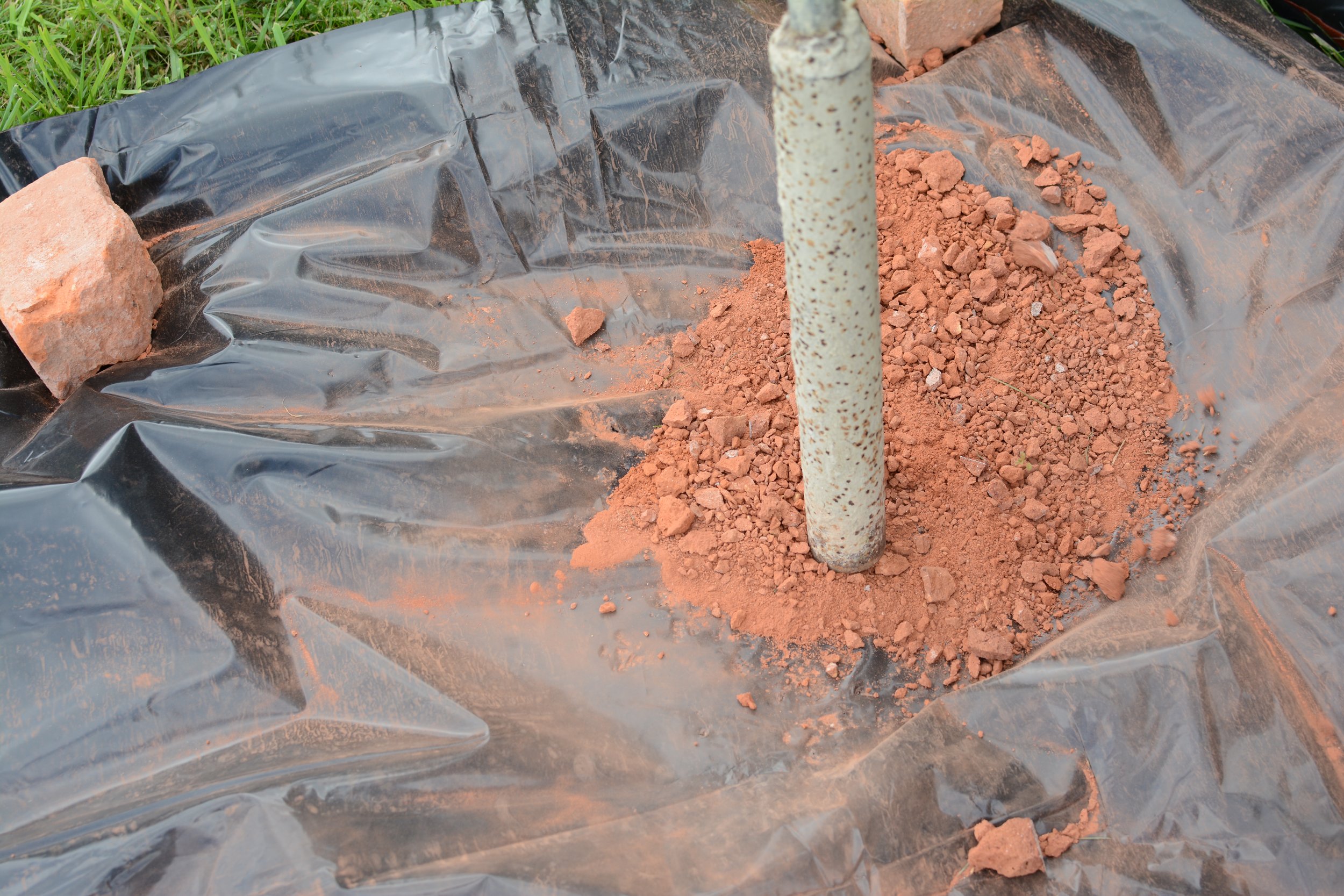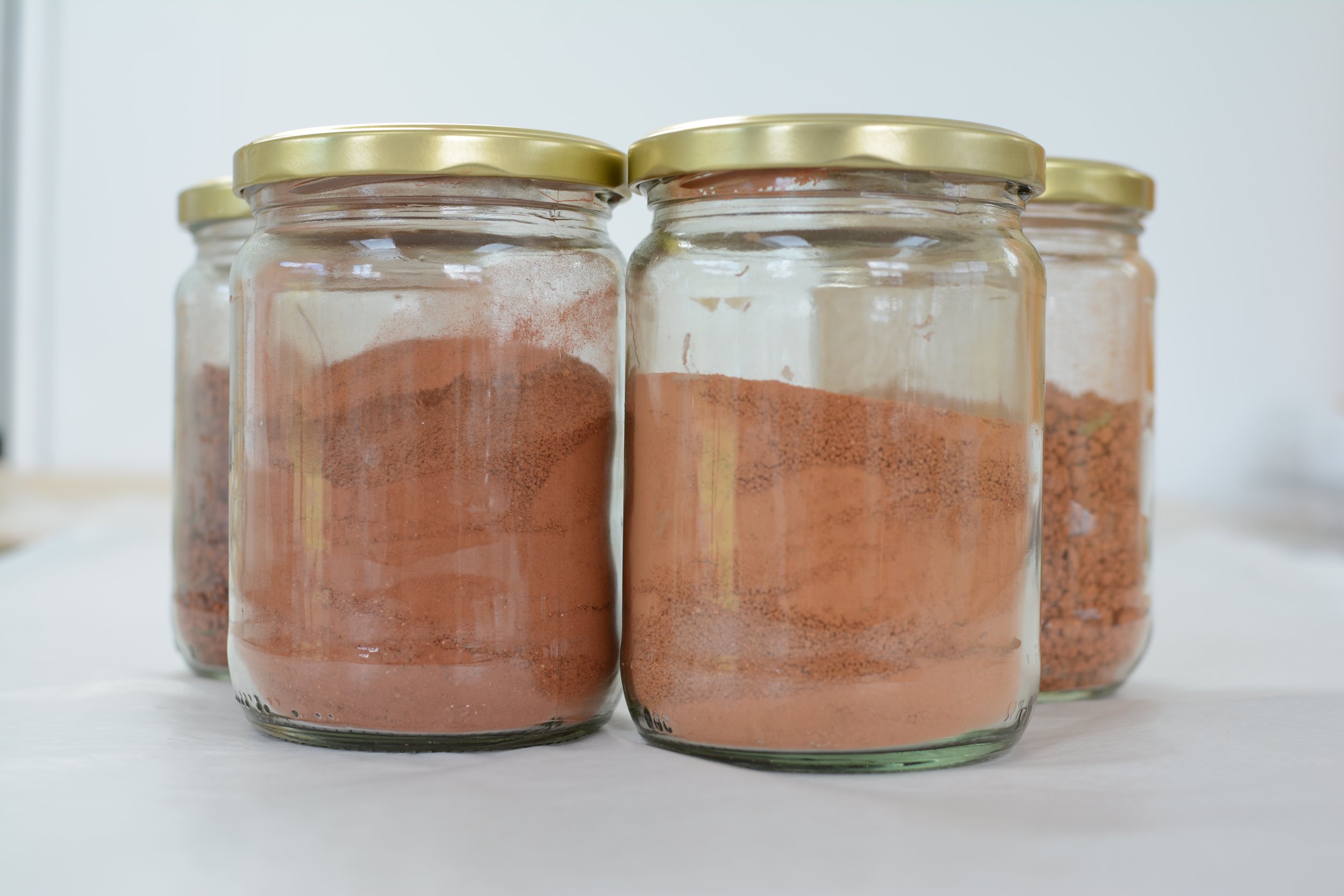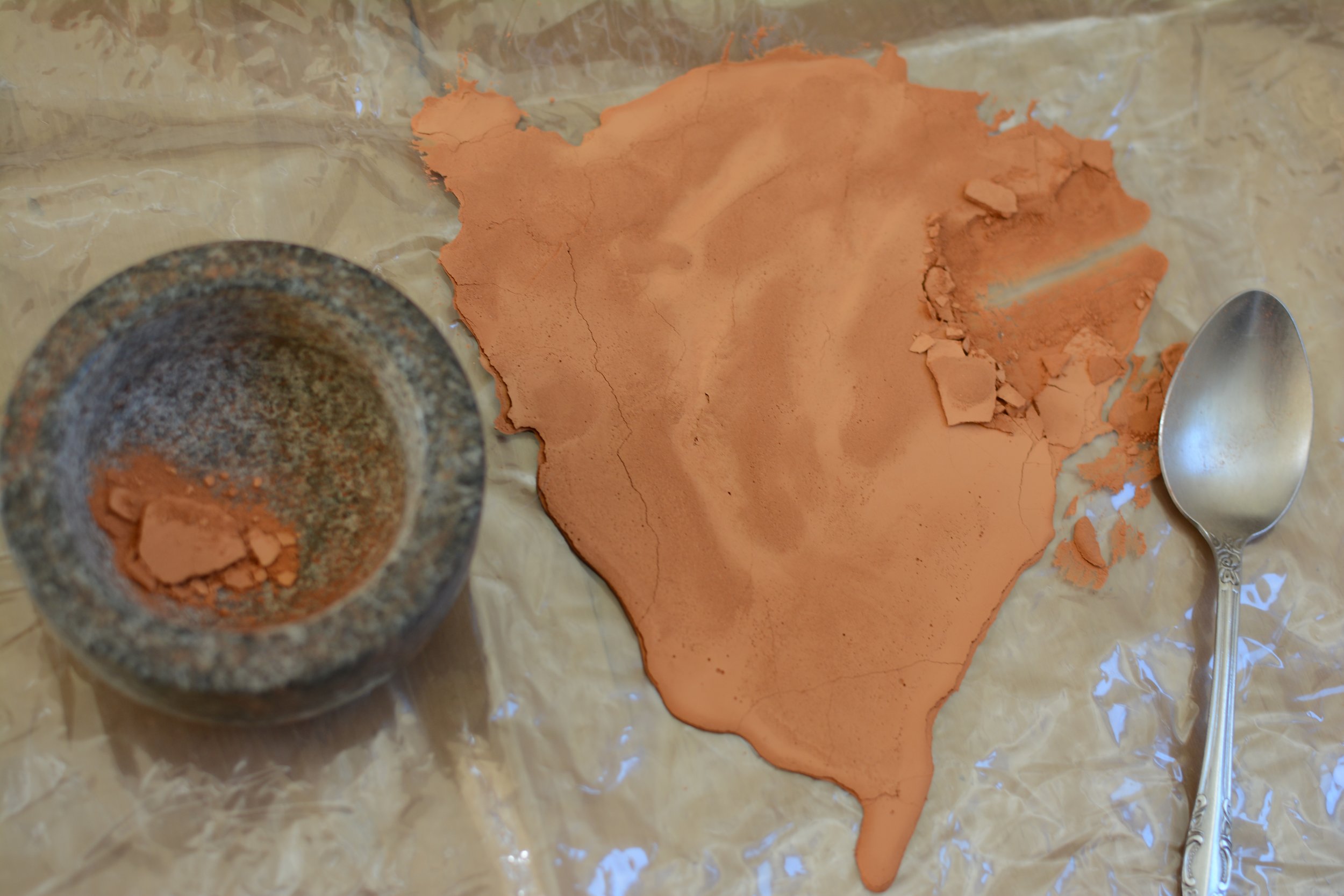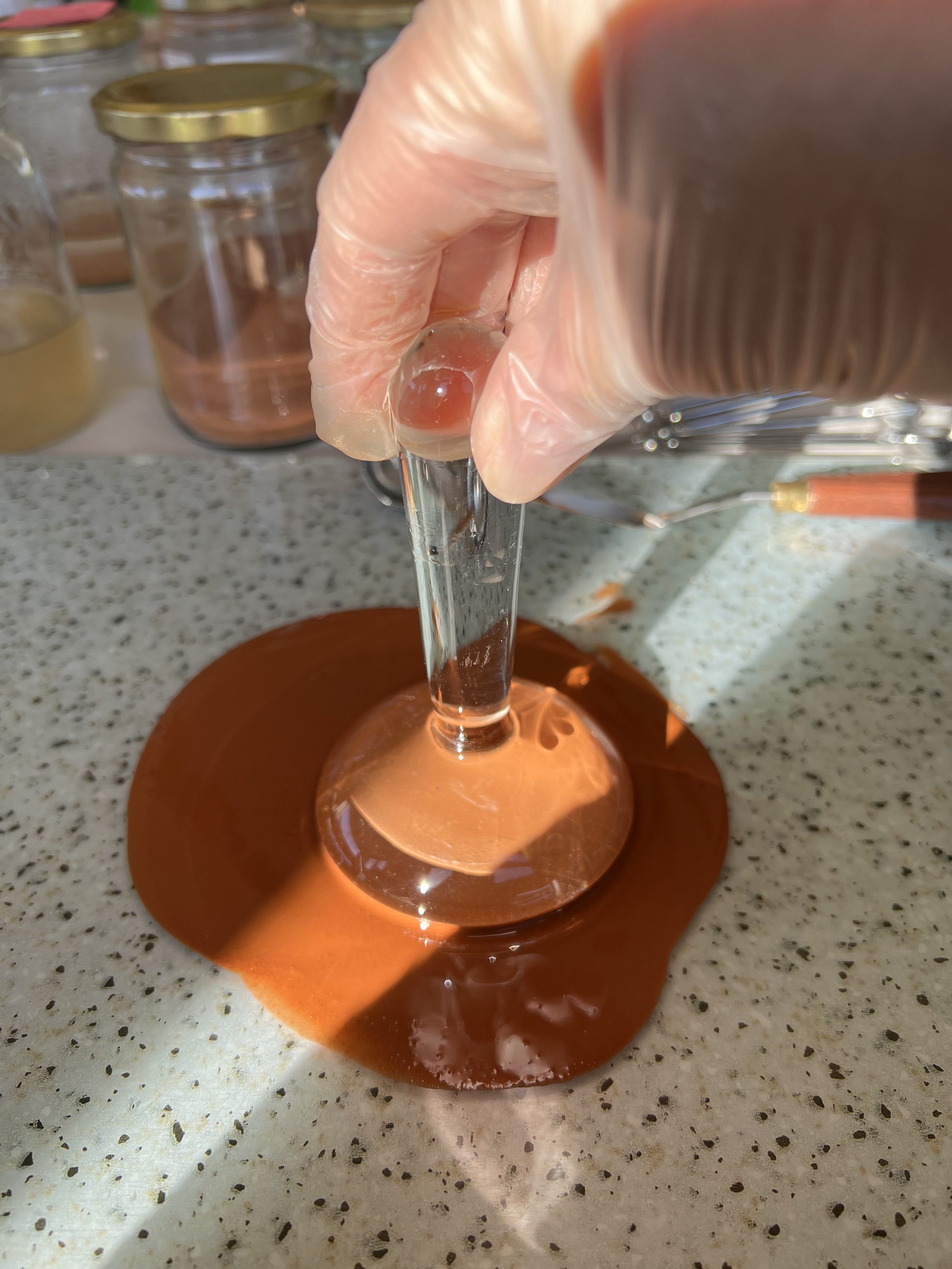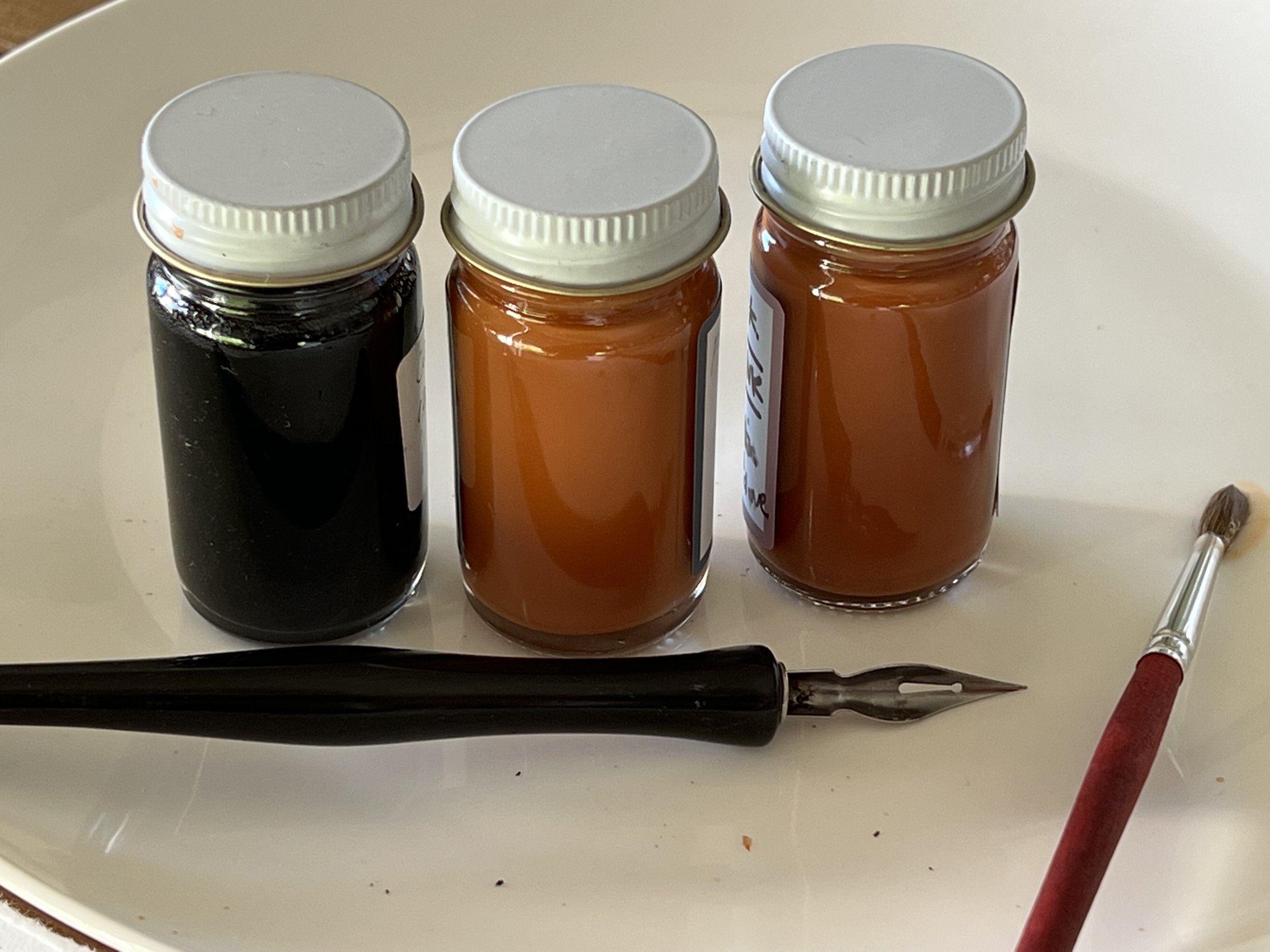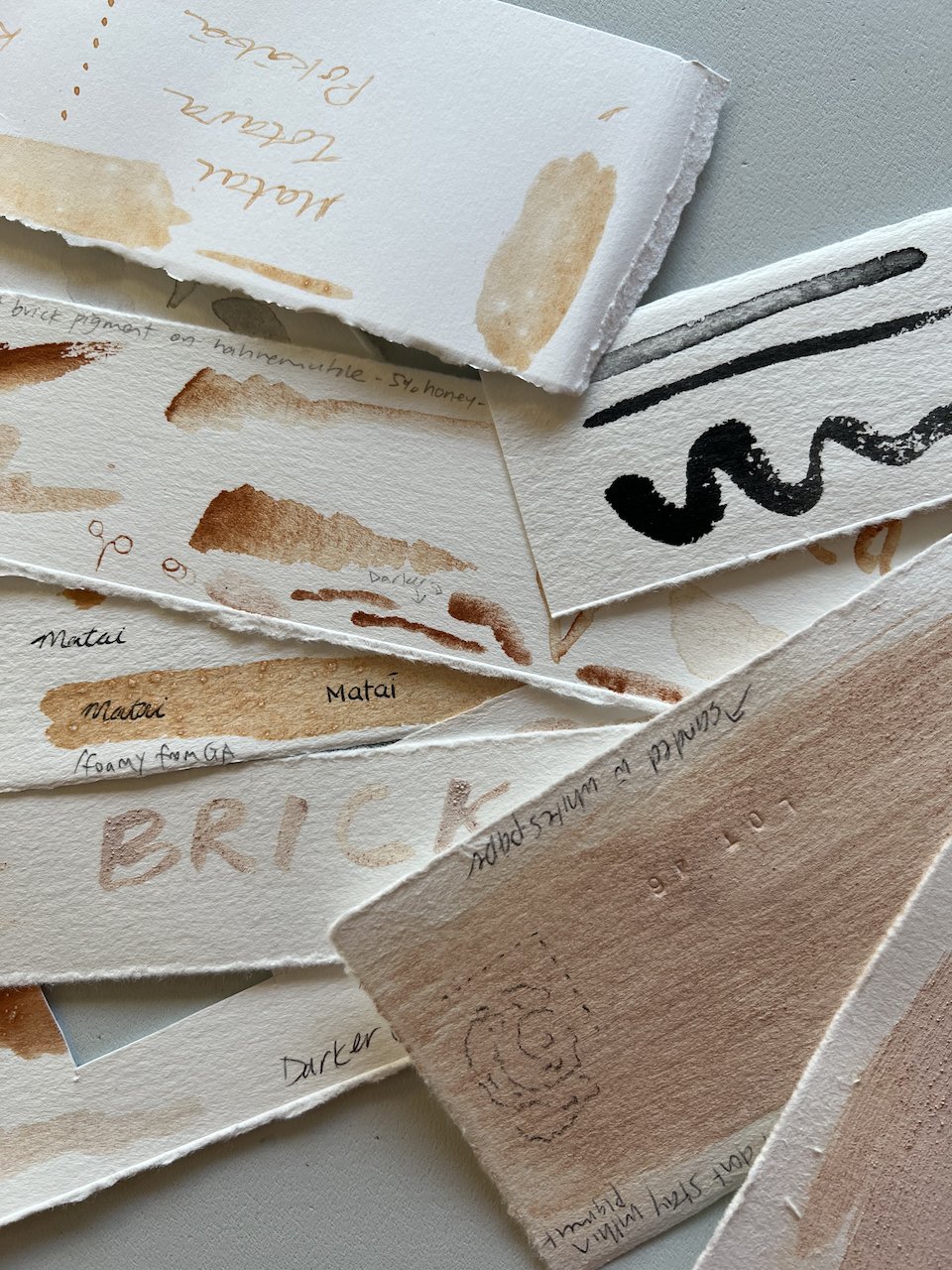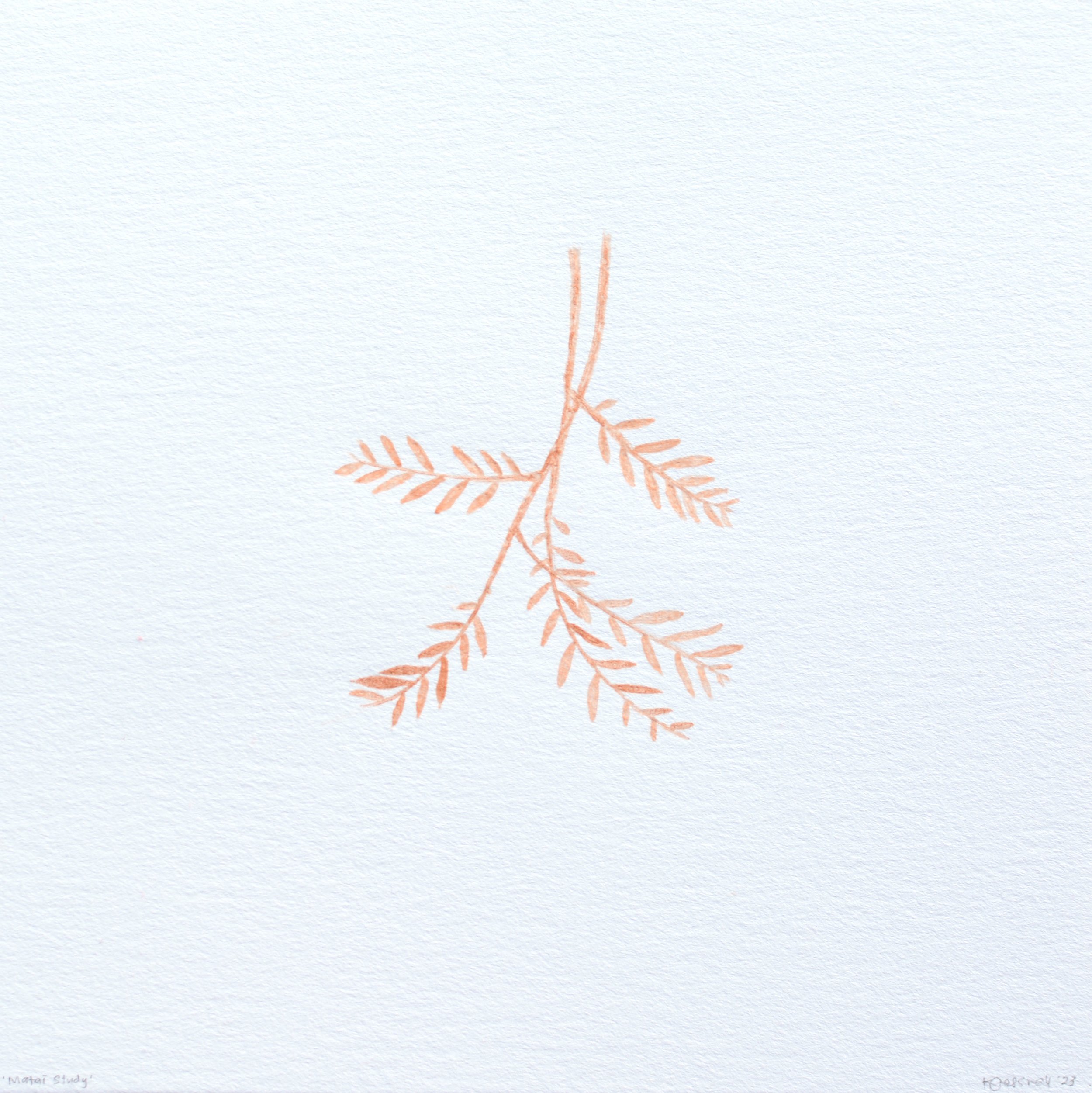One piece of work I was really keen to make while undertaking the fellowship, was drawing with pigment sourced directly from the central city area. A large block of the CBD, from Dee Street to Kelvin and Tay to Esk was demolished in 2020 and redeveloped - opening in early 2023 under the name of Invercargill Central.
I had the pleasure of talking to Lucy Mayes online recently who teaches pigment making at London Pigment. I really liked her observation that we have become disconnected from where colour comes from in this modern world. How is colour extracted, where can it be found? Unlocking the colour around us feels filled with so much potential…..
One resulting work, ’From the Forest’ is a collection of four plant studies in ink and watercolour made from Invercargill/ Waihōpai CBD salvaged demolition brick. The plants represented are specifically connected to the area and what would have grown here before the city. Pōkākā, Mataī, Wīwī and coprosma pedicellata - now rare. There is some circularity in the likelihood these bricks were made from the earth on the border of the developing city, the bush fuelled the kilns and the bricks formed the expansion of the built environment.
Brick is essentially red ochre, an earth pigment. Looking at the report from the archaeologists that were involved with the Tay/ Esk street demolition, there were a few bricks that were found with the frog marks on them indicating the maker. Some bricks came over from Kilmarnock in Scotland but Invercargill had a number of local brickworks. C Meyers - Waikiwi, had 55 acres of clay bearing land. Todd ’s was another brickworks in Invercargill as well as brick and tile works in Makarewa that supplied the city by railway. Access to these materials enabled building and quite importantly for such a wet area - drain laying, which changed the landscape very much!
Making Pigment
It was quite a process and fortunately I had a very willing brick crushing helper. We crushed the brick with fencing tampers and hammers. I then sieved it, ground it in the pestle and mortar, sieved it again, ground it, washed it, dried it, ground it and finally mulled the pigment with a gum arabic solution and for the watercolour pans made from it, also a little honey. It was kind of magical to wind up with something useable and directly linked to such a specific place.
As an aside I made my own carbon black ink solution which reticulates beautifully - a bit like tusche in lithography. I also tested mixing the pigment in with gesso for a lovely pinky colour - all quite gritty but interesting in the difference to the ink.
The plant studies were the last piece I was able to produce before my fellowship time ran out, but I do feel like there is much more to be made with this medium.
After years living in Wellington where brick doesn’t feature so much, I have enjoyed seeing the brick buildings of Invercargill. There are still some very iconic shapes in the backs of retail buildings or old workshops and yards.
As the Heritage Properties report states ‘Historic bricks ….are tangible pieces of the past [that we can connect with]’.

